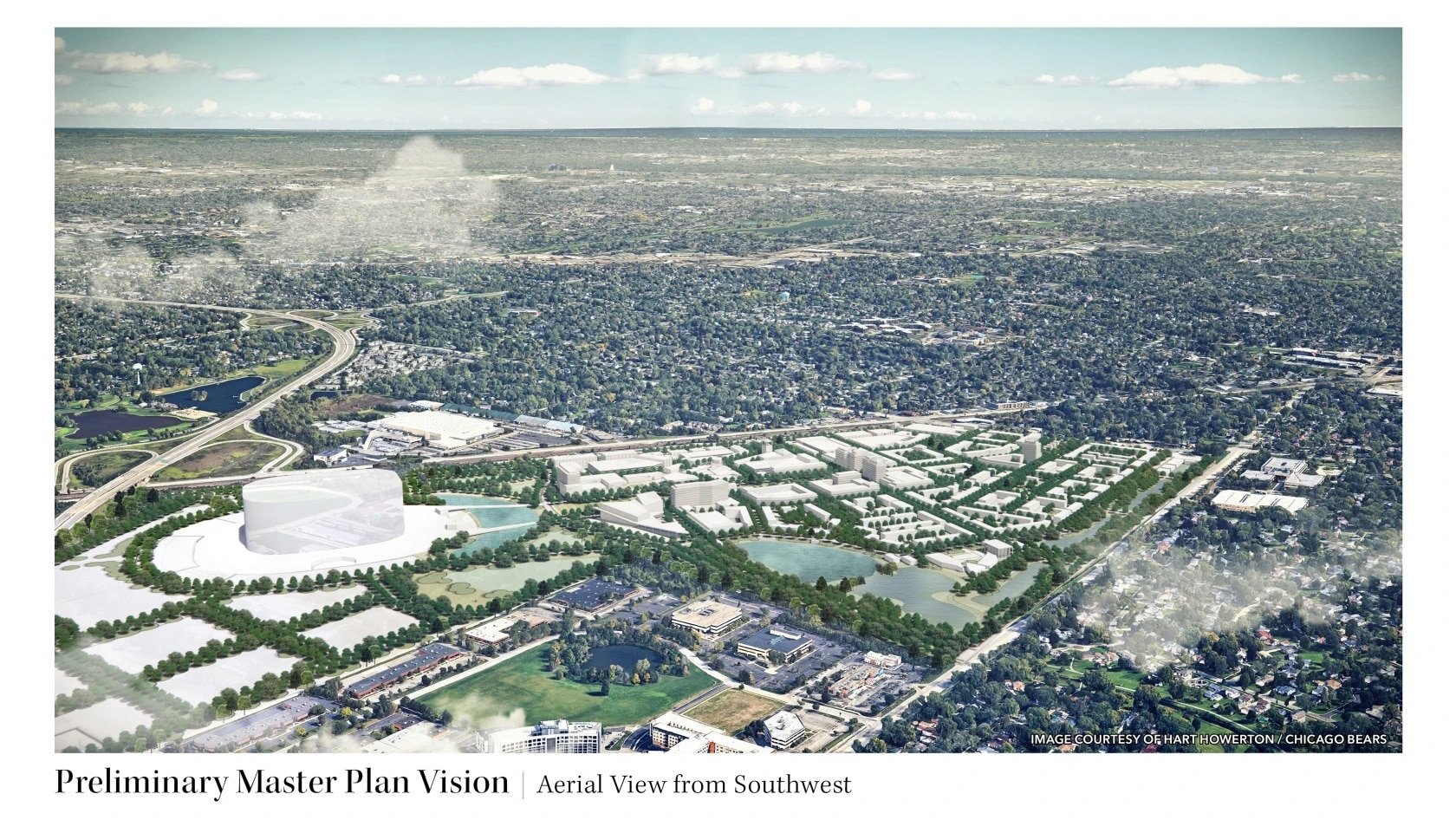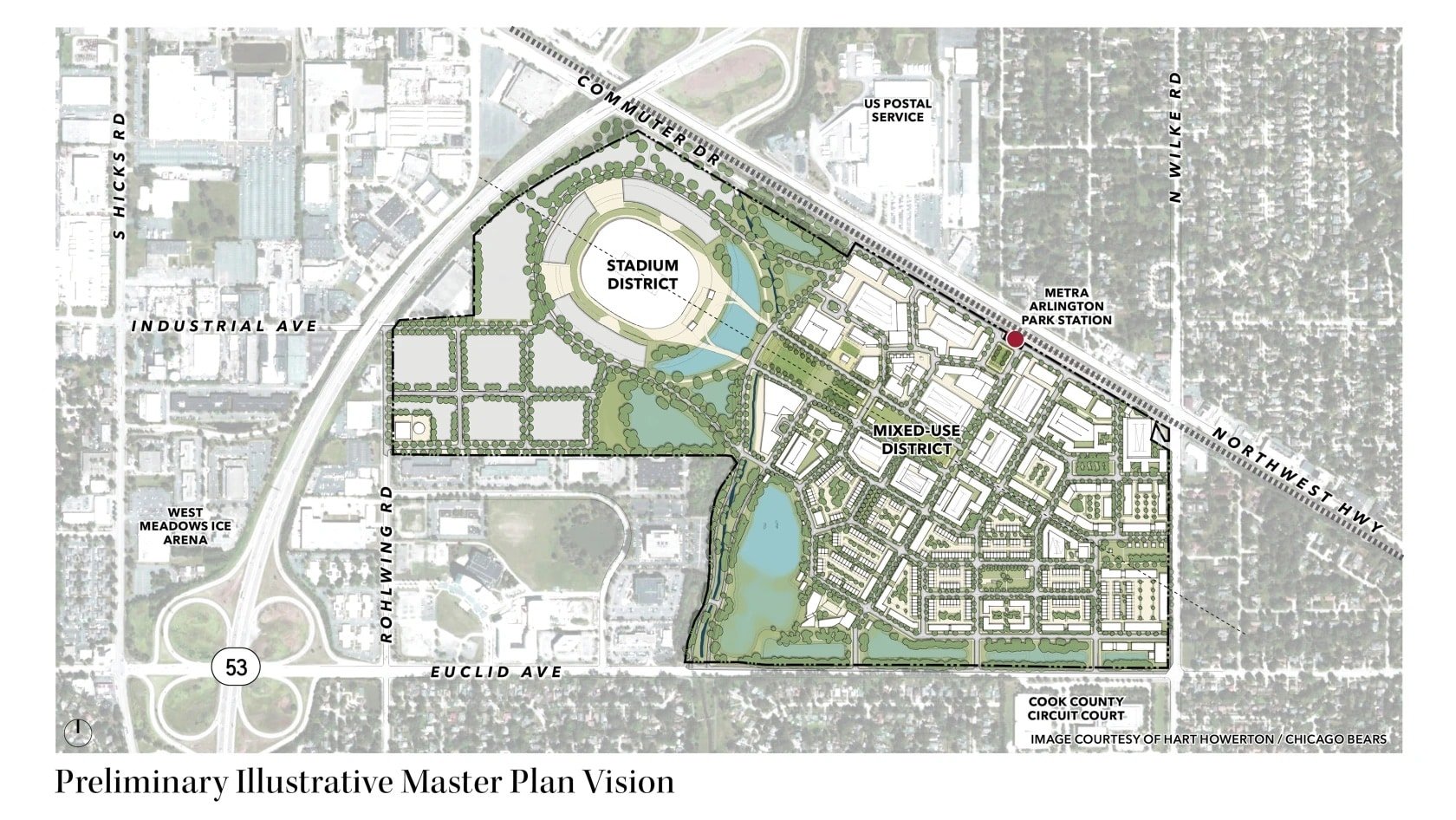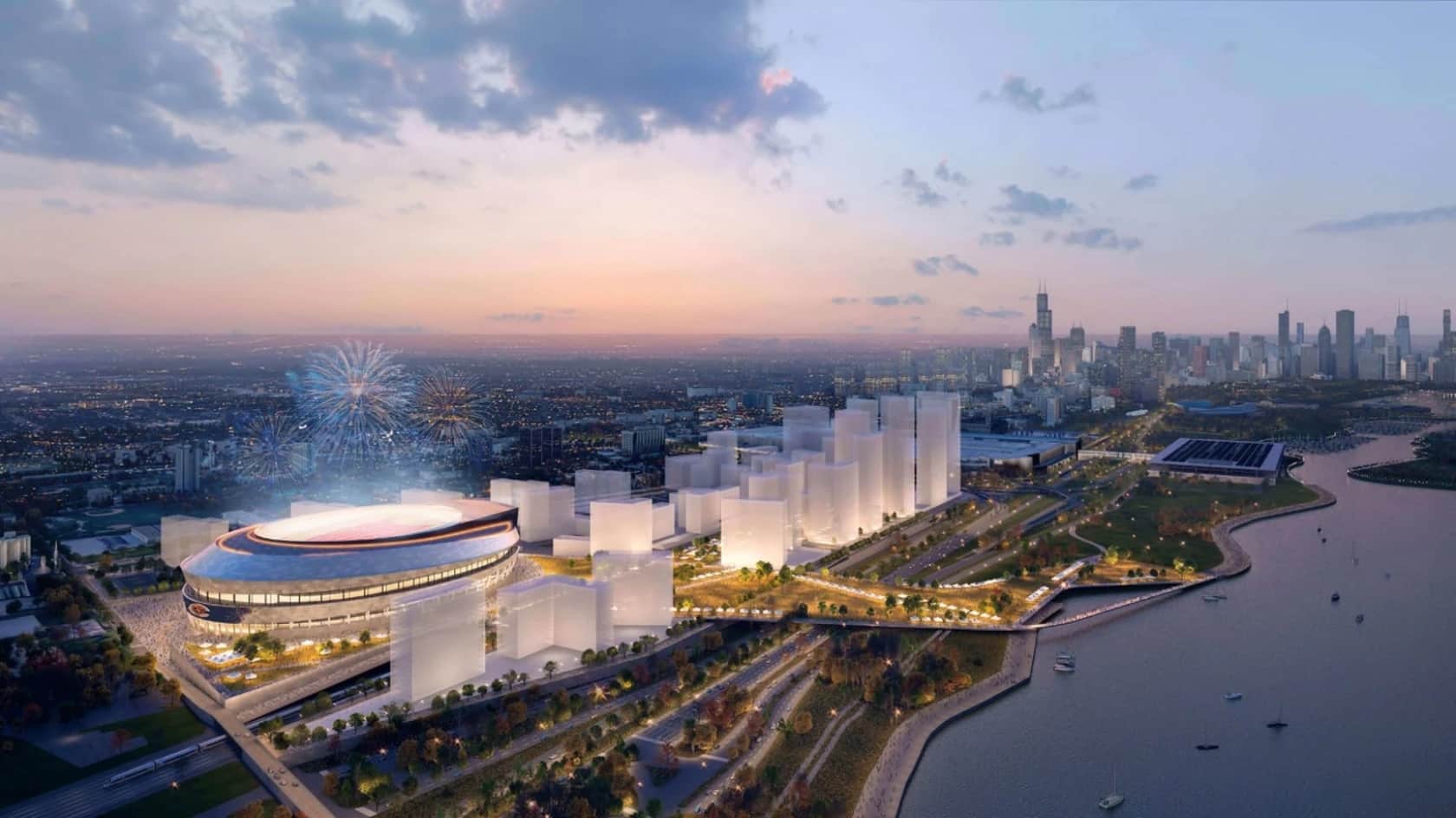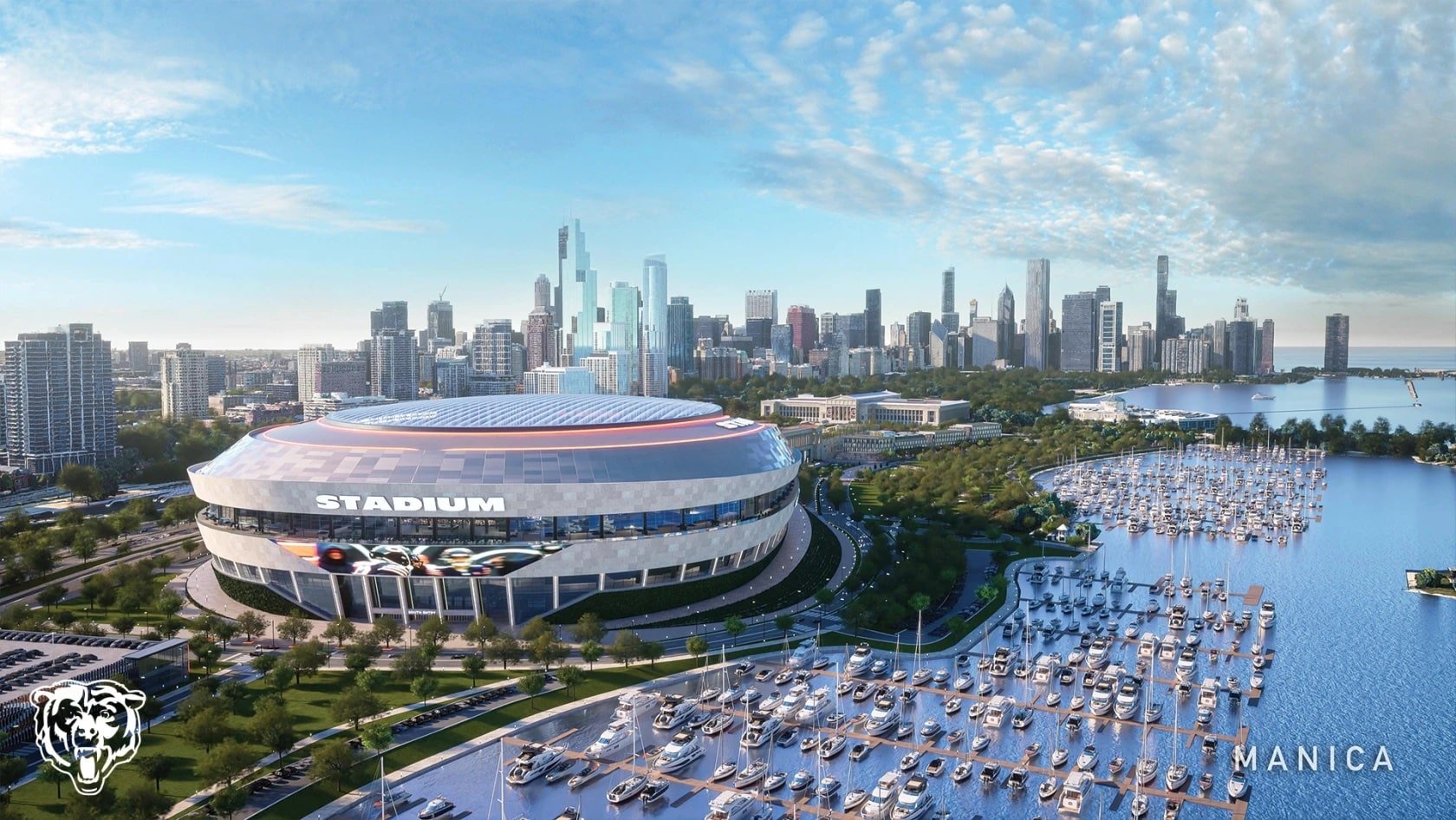Grading The Bears Commercial Real Estate Stadium Draft Picks
After a long tenure at Soldier Field, the Chicago Bears are on the clock for their next big pick: where to build their brand-new stadium. Three contenders have emerged in what feels more like an NFL draft than a real estate deal, each offering a unique playbook for the future home of the Monsters of the Midway. The question is, which site is the franchise quarterback, and which is the late-round pick destined for the practice squad? Let’s break down the three most likely multi-billion-dollar proposals: Arlington Heights, Bronzeville, and the lakefront.
Arlington Heights: The Suburban Power Play
General Manager: The Chicago Bears, with architect Hart Howerton leading the design team.
Contract Details: A whopping $5 billion proposal.
Team Contribution: The Bears plan to cover the full cost of the stadium while seeking public funds for mixed-use developments surrounding the site.
Public Funding: The exact amount is unknown, but the Bears have made it clear that they would like some assistance for infrastructure and development beyond the stadium itself.
Scouting Report: The Bears have already dropped $197.2 million to acquire the 326-acre Arlington Park property, making it clear they’re serious about this option. The plan envisions an enclosed, world-class stadium, but the real X-factor is the accompanying mixed-use district, which will feature restaurants, office space, hotels, parks, and open areas.

Impact on the Arlington Heights Commercial Real Estate Market:
- Retail Growth: The addition of a massive entertainment district would bring major retail brands to the area, boosting Arlington Heights’ commercial sector.
- Office Space Demand: While remote work has impacted office markets, a stadium-driven entertainment hub could attract new businesses looking for prime locations.
- Residential Development: Housing demand would likely increase, leading to potential high-rise developments in surrounding areas.

Pros:
- Limited public funding is needed for the stadium itself
- There is plenty of space for a full-fledged entertainment district
- Less congestion and easier development logistics
Cons:
- Moves the Bears 25 miles outside Chicago
- Lacks robust public transportation options
- Leaves Soldier Field and lakefront development questions unanswered
Draft Grade: B+ – Strong pick with upside, but relocation concerns linger.
Bronzeville: The Underdog with Big Potential
General Manager: Farpoint Development, with architect Lamar Johnson calling the plays.
Contract Details: Estimated $3.2 billion, with potential increases.
Team Contribution: The Bears have yet to formally engage with this proposal.
Public Funding: Proposed $600 million in state funding for site preparation, plus $125 million for a land bridge over Lake Shore Drive.

Scouting Report: Nestled on the former Michael Reese Hospital site, this proposal envisions a stadium in a prime Chicago neighborhood, complete with a dramatic land bridge connecting it to the lakefront. It offers the unique appeal of revitalizing an underutilized space while keeping the Bears in the city limits.
Impact on the Commercial Real Estate Market:
- Urban Revitalization: This could drive new investment into Bronzeville, which has seen increasing development interest in recent years.
- Infrastructure Upgrades: The proposed land bridge would make the area more pedestrian-friendly, which could boost property values.
- Hotel & Hospitality Growth: Increased demand for nearby lodging could lead to the rise of new boutique hotels.

Pros:
- Keeps the Bears (and their economic impact) in Chicago
- Excellent public transit access
- Revitalizes a currently underutilized space
Cons:
- Taxpayer investment is required just to prep the site
- The developer has already hinted the price tag may increase
- Limited space for tailgating and parking
Draft Grade: C+ A promising pick, but still raw and requiring development.
The Museum Campus Lakefront: The High-Risk, High-Reward Pick
General Manager: The Chicago Bears, with architect Manica designing the blueprint.
Contract Details: Initially estimated at $4.7 billion, but real costs may soar beyond $5.9 billion.
Team Contribution: Bears are committed to covering around $2 billion of the cost.
Public Funding: Could require billions, largely through state-backed bonds and tax revenue.

Scouting Report: This is the flashy first-round pick that comes with huge potential but major risks. The proposal would keep the Bears in the heart of Chicago, overhauling the entire museum campus with a new domed stadium, increased parkland, and improved infrastructure. The biggest hurdle? The massive public funding needed to pull it off.
Impact on the Commercial Real Estate Market:
- Tourism Boom: Keeping the stadium downtown ensures continued economic benefits for restaurants, bars, and hotels.
- Skyrocketing Property Values: Proximity to a modernized entertainment district would drive up real estate prices, particularly for nearby condos and office spaces.
- Infrastructure Strain: Major public investment would be needed for transportation and parking solutions, impacting city-wide development budgets.

Pros:
- Retains the Bears’ economic impact in downtown Chicago
- Dramatic improvements to the entire museum campus
- Iconic lakefront location
Cons:
- Sky-high public cost (billions in taxpayer funding)
- Parking and transportation challenges remain
- Debt from past Soldier Field renovations still looms
Draft Grade: B – A flashy, ambitious pick with a high upside but serious salary cap concerns.
Final Verdict: Which Site Wins the Draft?
If this were the NFL Draft, Arlington Heights would be the safe, reliable first-rounder, offering strong potential with minimal risk. Bronzeville is the promising mid-round sleeper that could develop into something special with the right coaching (or in this case, financial backing). On the other hand, the museum campus lakefront proposal is a top-10 pick with massive potential but major cap concerns, requiring a hefty investment to make it work.
From a commercial real estate perspective, each option presents a unique opportunity:
- Arlington Heights: Major suburban development, a controlled stadium district, and a massive entertainment hub.
- Bronzeville: Urban revitalization, strong public transit connectivity, and potential long-term investment growth.
- Museum Campus: High tourism benefits, major city-wide economic impacts, but potentially vast public costs.
The Bears haven’t officially committed to any of these sites, but no matter which proposal wins out, it will redefine the future of Chicago’s commercial real estate landscape. Like any draft pick, only time will tell which move is a game-changer and which could end up a bust.

